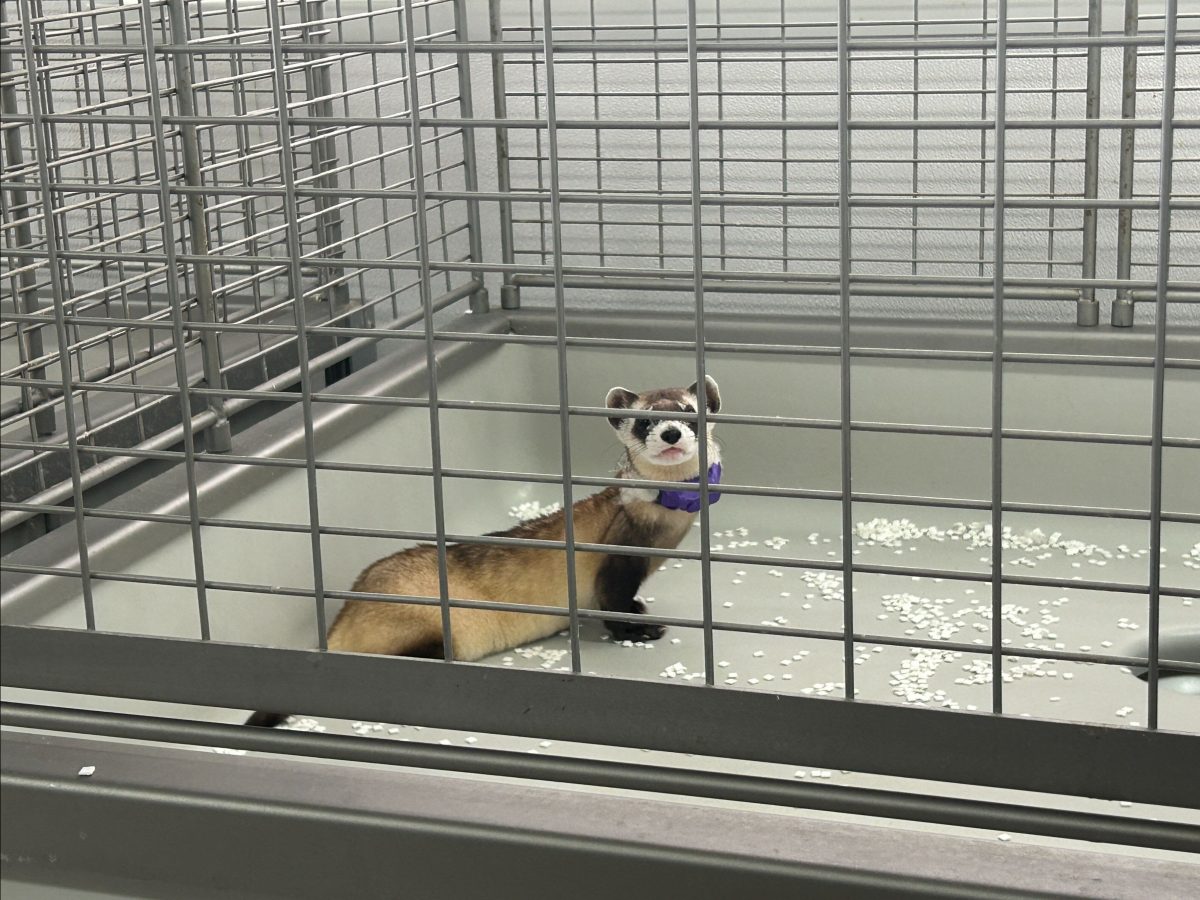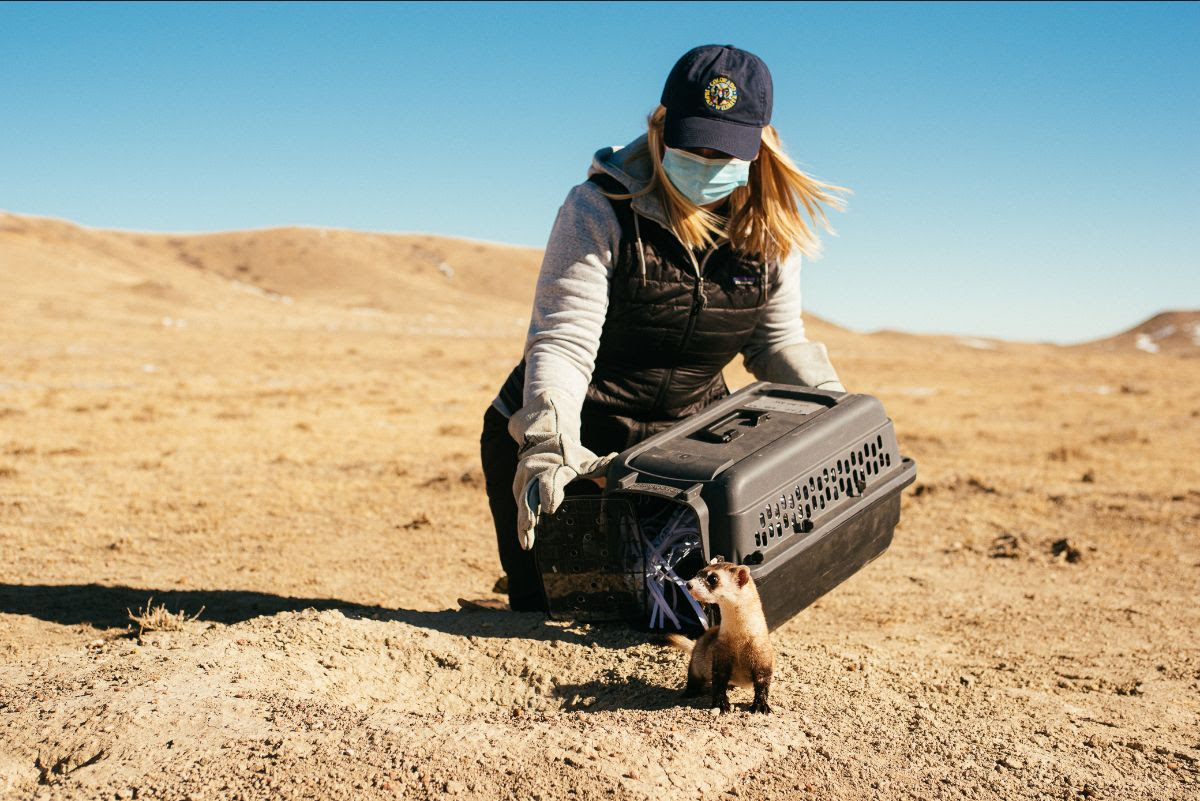More than 100 extremely endangered black-footed ferrets have been released into the wild since 2022 at the Southern Plains Land Trust ranch south of Lamar, but biologists’ most recent fall survey found zero evidence that any had survived.
The apparently abysmal release-survival rate for North America’s most endangered mammal regularly undercuts the dedicated work of dozens of biologists and wildlife officers in Colorado. The state’s southern ranches and federal lands have been the center of black-footed ferret reintroduction using carefully bred kits and cloned animals raised at a federal research center near Fort Collins.
Now, a release of 20 more ferrets at the trust’s Heartland Ranch on Tuesday will be followed Wednesday by a major technological escalation of protection efforts.
Each ferret was fitted with a radio-frequency collar before leaving the Wellington breeding site for Lamar. On Wednesday, researchers from Colorado Parks and Wildlife and the national Smithsonian science center will fly drones for the first time to track the ferrets’ VHF collars, while also looking out for predators or other threats that wipe them out as quickly as they are released.
“This project aims to enhance our understanding of the relationship between black-footed ferrets and their predators,” said Jonathan Reitz, a CPW wildlife biologist who has worked on multiple releases and tracking efforts in southeastern Colorado. “Specifically, we are investigating which species prey on any black-footed ferrets in the two weeks following the ferret release.”
Biologists have released thousands of captive-bred ferrets in the western U.S. since breeding programs began. Black-footed ferrets, which play a keystone role in prairie biology, were thought to be extinct in North America until a Wyoming ranch dog dropped a ferret carcass on a doorstep, from a nearby undiscovered healthy colony.
The entire colony was transported to research centers for restoration of the species. Since the healthy genetic stock was limited to just a handful of potential breeders, biologists have since used cloning to breed kits from frozen genes. A cloned ferret successfully gave birth to conventionally-bred offspring for the first time a year ago at the Smithsonian’s facility in Virginia.
Upon release, ferrets often are hit by the bubonic plague that still lingers after contributing to their wipeout over the decades, as well as predation by hawks and eagles, and getting nudged out of their holes by burrowing owls and other ground dwellers. They also suffer from declines in the prairie dogs that make up 90% of their diet, as development and fencepost to fencepost farm plowing tear up prairie dog colonies.
The window for drone-spotting of the ferrets themselves will be very short, as the collars rub off in a few days from tunneling and other activity, state wildlife officials said in a release. Even healthy ferrets are most elusive to researchers or ranch families who keep an eye out for them, as the creatures are nocturnal and extremely wary when out at dusk or dawn.
 A new batch of captive-bred black-footed ferrets at a research center in Wellington, Colo., were fitted with radio collars detectable by drone surveys. They awaited transport to a ranch near Lamar in November, 2025. (Colorado Parks and Wildlife)
A new batch of captive-bred black-footed ferrets at a research center in Wellington, Colo., were fitted with radio collars detectable by drone surveys. They awaited transport to a ranch near Lamar in November, 2025. (Colorado Parks and Wildlife)
The drone-watching could, however, also turn up better evidence of frequent predators. Researchers may also watch for evidence of ferrets or other animals eating the colored plague-vaccination pellets they’ve been scattering outside prairie dog holes during years of releases.
There is better ferret news from another key Colorado release site, a few miles to the north of Lamar at May Ranch. Ranch owner and Colorado Parks and Wildlife commissioner Dallas May said the release program there has been “extremely blessed,” with multiple detections of surviving animals.
Biologists verified wild-born kits on the ranch last year, and this year captured both wild-born kits and their mother, while verifying that the mother was herself one of the previous year’s wild-born kits. “So we have second-generation wild born ferrets on the ranch,” May said.
“We are hoping to be declared a source site for them, and that is what we are working towards,” he added. “None of it is any credit to us, we are just fortunate,” May said.
May said he is hopeful the new drone tracking and research will help all sites. He’s also optimistic there are ferrets surviving at the other Lamar-area ranch that are simply undetected so far.
“It is very difficult to detect them, when they are above ground only one hour every four days, and that is a massive area,” May said.
Type of Story: News
Based on facts, either observed and verified directly by the reporter, or reported and verified from knowledgeable sources.
